You get off the bus in what appears to be the middle of nowhere. An empty highway with nothing for miles, save a sleepy settlement a hundred metres away and a sala to shelter the napping motorbike taxi drivers. After arguing with the motorbike taxi drivers for a while about your journey from this point onward, you decide to give yourself a break from the back and forth and eat some fried rice in the only place you can eat in the roadside hamlet. The Isan farm girls giggle as they see you walk in and then study you as you eat. They ask the normal questions: Are you married? Are Thai girls beautiful? After negotiating afresh with one of the motorbike drivers who followed you to the restaurant, you end up in the back of a rusted out jalopy on a bamboo mat climbing a now dormant volcano. The road snakes through paddy fields and the engine almost cuts out on several of the very steep inclines. As you hold onto the bare chassis and hope that the car doesn’t stall, sending you plummeting back down the mountain, you discover the shedded skin of a snake caught in the bamboo you are sitting on. Suddenly you come to an abrupt halt. You have arrived in one piece and only have to worry about the possibility of a snake on the return journey.
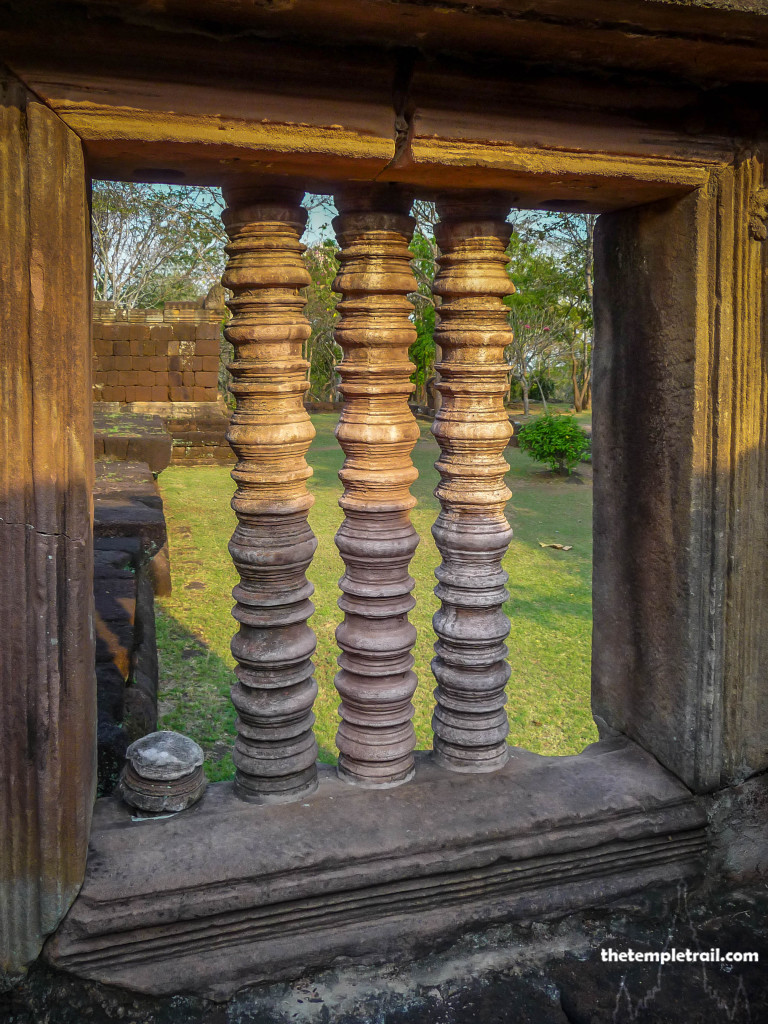
18 km east from the Isaan town of Buriram is the awe inspiring Khmer temple of Prasat Phanom Rung. It is easily the most complete and fully restored temple complex in Thailand. It sits 150 metres up on the top of an extinct volcano. It is the highest point for miles and the temple surveys the dry plains around it and the forested mountains to the south. Standing in the compound at the peak, your view is incredible. This beacon in the middle of the Korat Plateau was once one of the most important votive structures outside of Angkor.
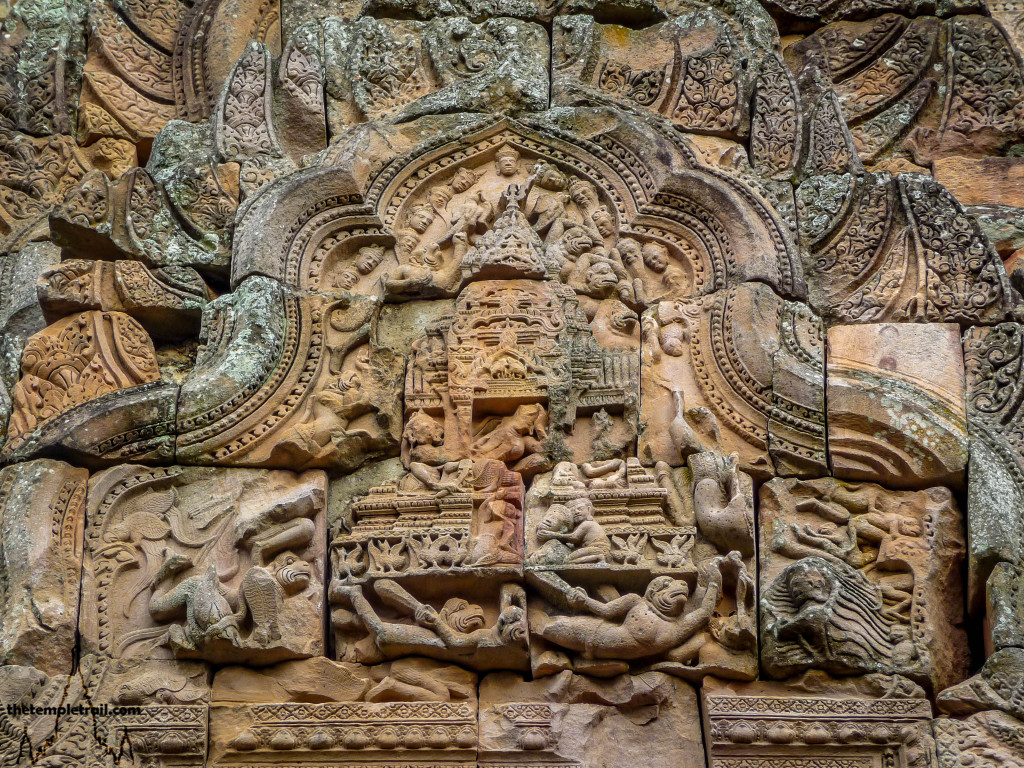
Symbolizing Mount Kailash, the abode of Śiva, the temple is dedicated to him. It was founded in the 10th century, with much of the temple being built during the reign of the Angkorian ruler, Suryavarman II in the 12th century as a pre-cursor to Angkor Wat. The temple flourished and continued to be improved on until the 13th century. It is resplendent with wonderful Khmer Hindu carvings including Śiva dancing, Kṛṣṇa and Narayana (Viṣṇu) on the Śeṣa Nāga with his consort Lakṣmī.
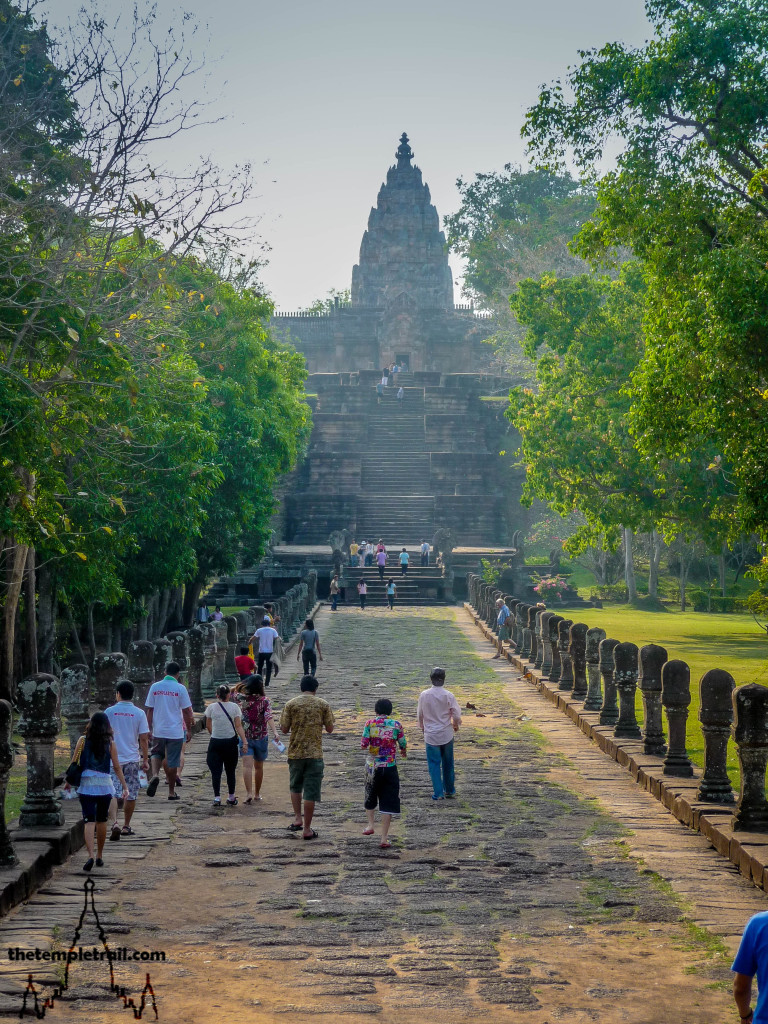
Starting at the bottom of the first set of stairs, and walking up past the souvenir stalls, the first platform you come to is the beginning of the ceremonial walk performed by kings of old. To your right on the cruciform platform is the 13th century Phlab Phla (pavilion) called Rung Chang Puak or stall of the white elephant. The u-shaped building was where the kings would have changed into their ceremonial garments before continuing their ascent. Tracing the footsteps of the king, you step out of the pavilion and onto the 160 metre long laterite ceremonial walkway. with the peak filling your field of vision, you continue down the walkway to the foot of the first Naga Bridge. As you walk along the causeway, you will notice that lining the path are seventy sao nang charang (lotus bud topped sandstone pillars). Arriving at the first Naga Bridge that connects heaven with earth, you pass the fearsome Nagas who guard the four directions of the bridge. You cross it and come to the five flights of the upper staircase.
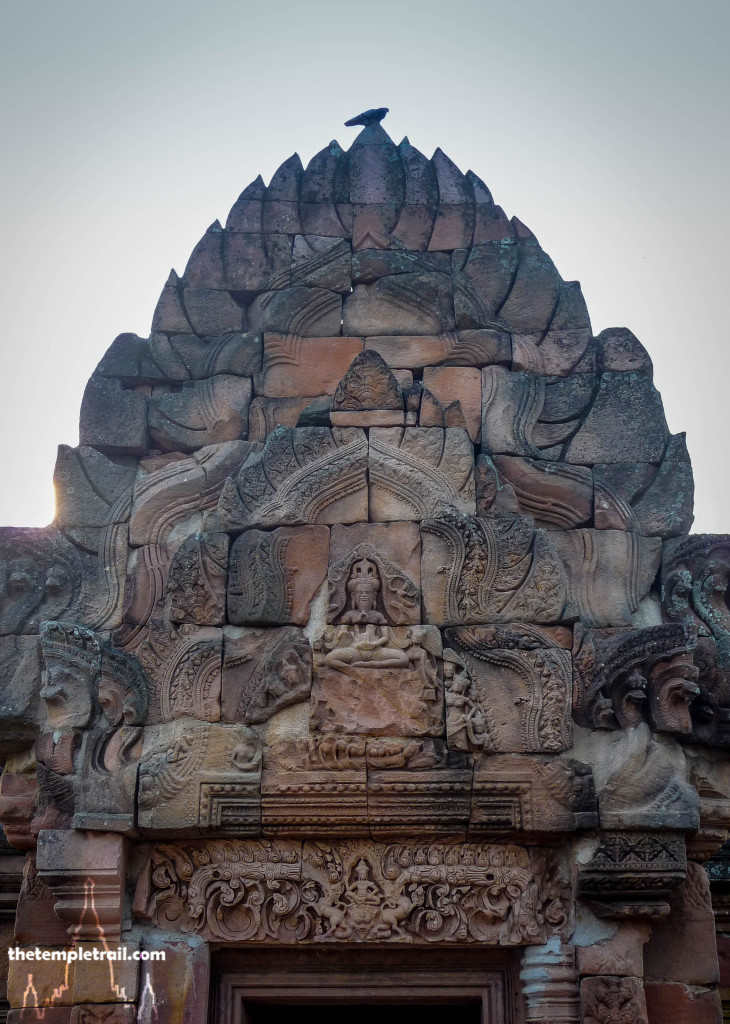
Each flight of stairs has a platform, and at the top of the 52 steps is a plateau and four square ponds. They flank the second Naga Bridge that sits directly in front of the eastern gallery’s gopuram (gateway tower). The gable over the gateway depicts Śiva as a healer. Passing through the doorway, you find yourself at the foot of the third and final Naga Bridge. You have crossed into the inner sanctum. Directly in front of you is the quadrangular central prang (tower).
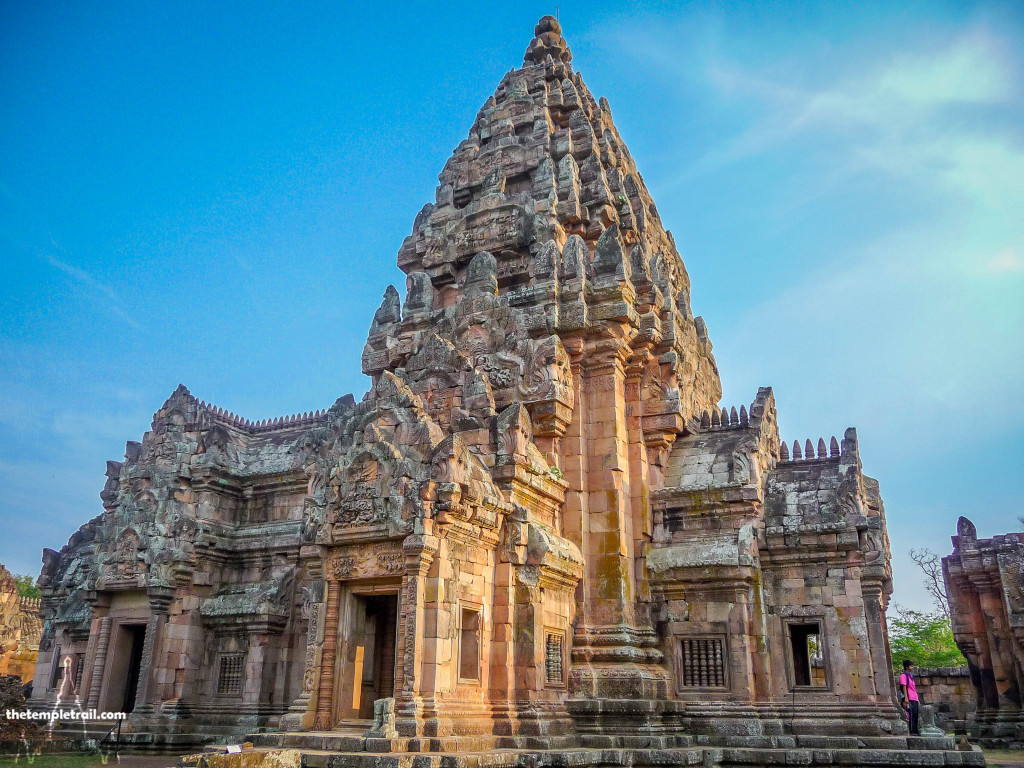
The prang is 23 metres tall and is constructed from pink sandstone. The local ruler Narendradit built the tower in the 12th century and it is spectacular. It is in the classic Angkor-style and after 17 years of restoration by the Thai government, is back to its former glory. Looking upwards you can see it is decorated with imagery from Hindu myth. Viṣṇu is shown as Rāma and also reclining on the Nāga. Śiva is shown dancing his dance of destruction. Hermits are depicted conducting daily rituals.
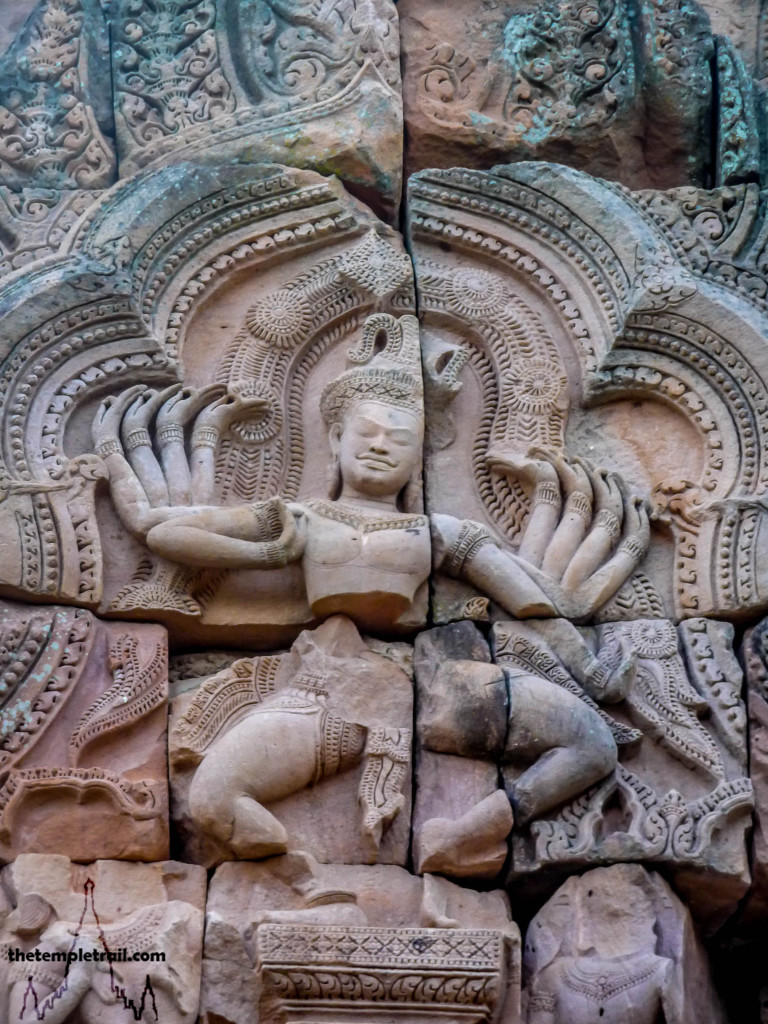
Entering the mandapa (entrance porch) in the front of the tower, you are swathed in darkness. Your eyes adjust and as you pass through the antarala (vestibule) into the centre, you come to the Śivaliṅgaṃ. This is the main item of worship; the phallus of Śiva . The lingam sits directly below the pinnacle of the prang in the cella (inner chamber). The energy of the lingam shoots straight up and out of the point of the tower fertilising the sky.
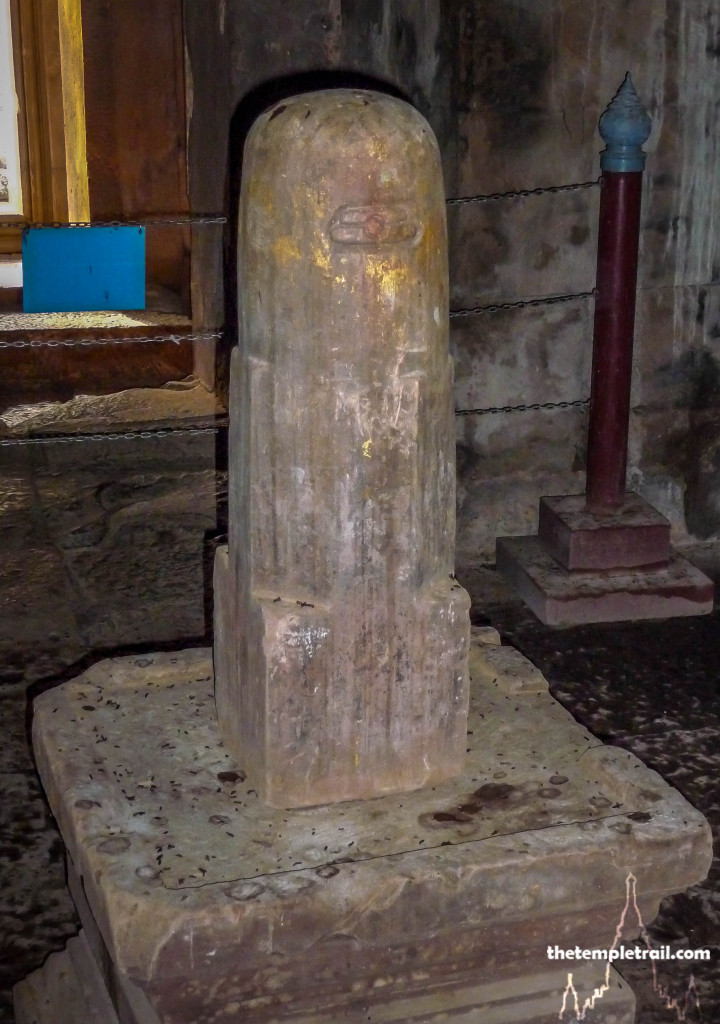
The tower contains more than just the lingam. There is a statue of Śiva’s mount Nandi the bull and above the eastern inner doorway are five hermits, one of which was a very important local holy man. There are also stone blocks depicting various Brahmin deities. Upon leaving the tower and exploring the grounds further, you find the remains of some 10th century brick and laterite buildings on the western side of the inner compound. They are little more than foundations and doorways, but they are striking in their ruined state.
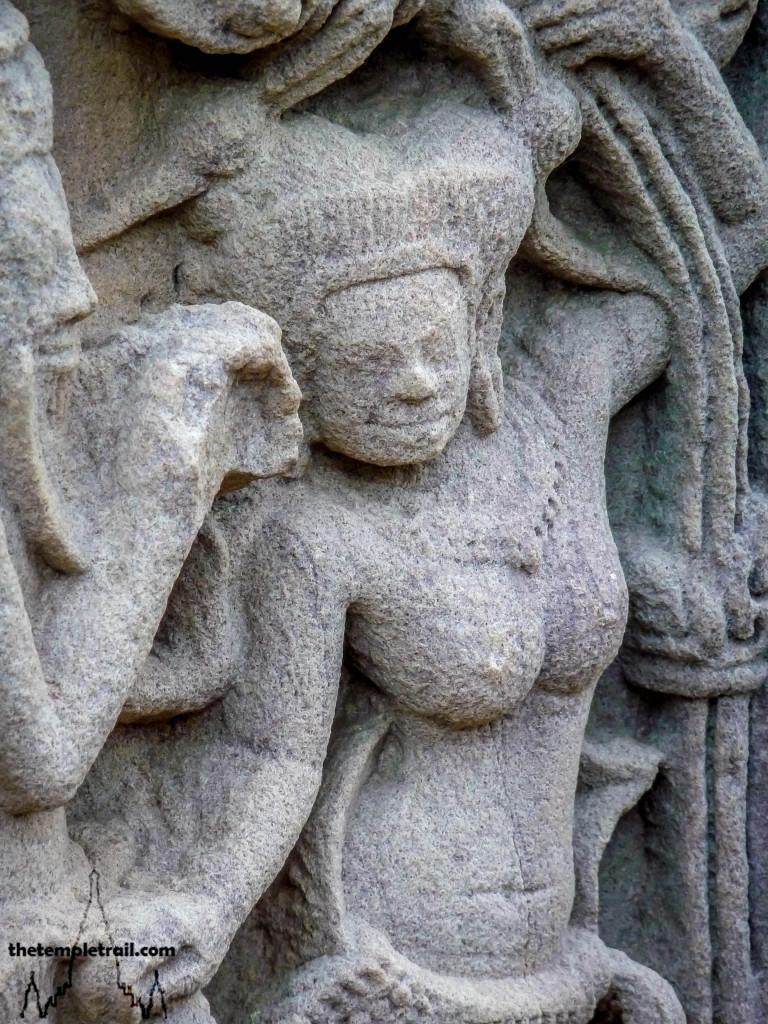
On the eastern side of the main prang, are two more buildings that predate the central tower. At the back of the complex is a smaller sandstone prang. This secondary prang is missing its pointed roof, but the style is the same as that of its larger counterpart. At the front is a bannalai. Usually these buildings, referred to a ‘libraries’ are pairs that sit either side of the main building. At Phanom Rung, only one is evident. The actual function of bannalai is unknown. Whether they were literal scriptural repositories or not is pure conjecture. This laterite structure is the same age at the buildings on the western side and precedes the main prang in construction.
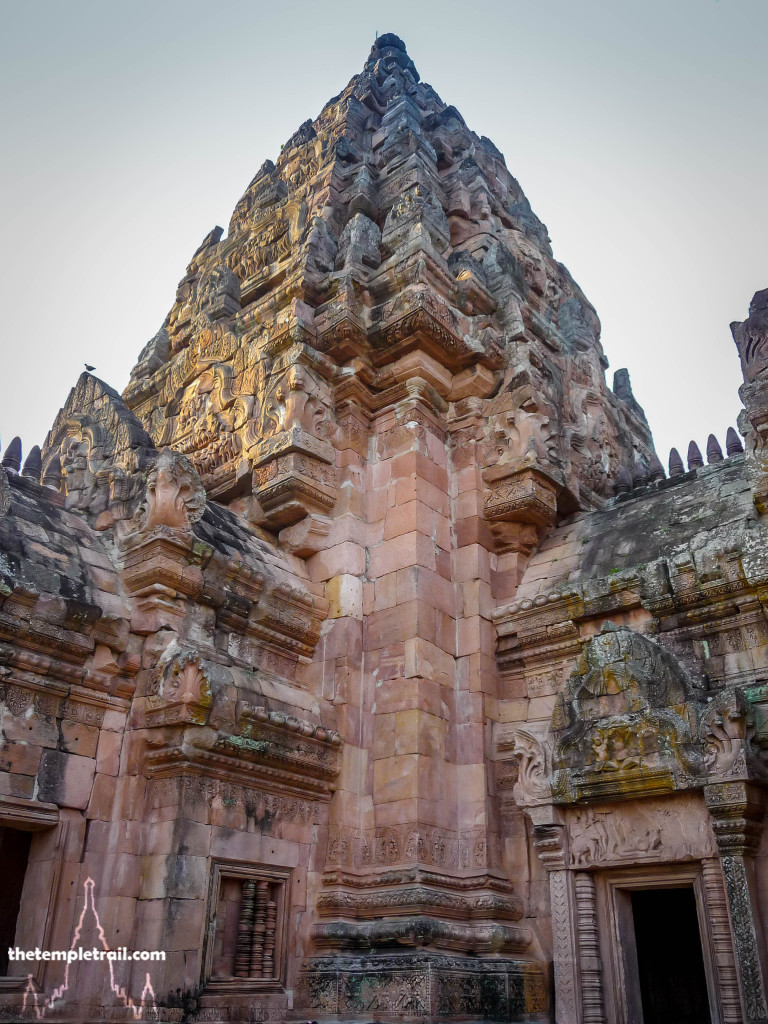
Wandering around the site and enjoying the splendid views over the Korat Plateau and towards the mountains marking the border with Cambodia, you feel what the ancients must have felt up here on this sacred spot. You are in the heavens, looking down on the mortal earth. Here you feel invincible; immortal. As you climb down, that feeling soon leaves you as the thought of the jalopy and its snake skin infused bamboo mat enters your mind. Soon you are flying down the volcano and back to reality. Getting out of the car, you shakily hand over your baht to the grinning driver. A wave of relief washes over you. It lasts until you realise that you have hours until the bus comes back along the dusty highway. You wait by the side of the road with nothing but the thought of the amazing place you have just seen to keep you entertained. Eventually the bus turns up and takes you back to Nakhon Ratchasima where a hot meal, cold drink and a comfortable bed await you.
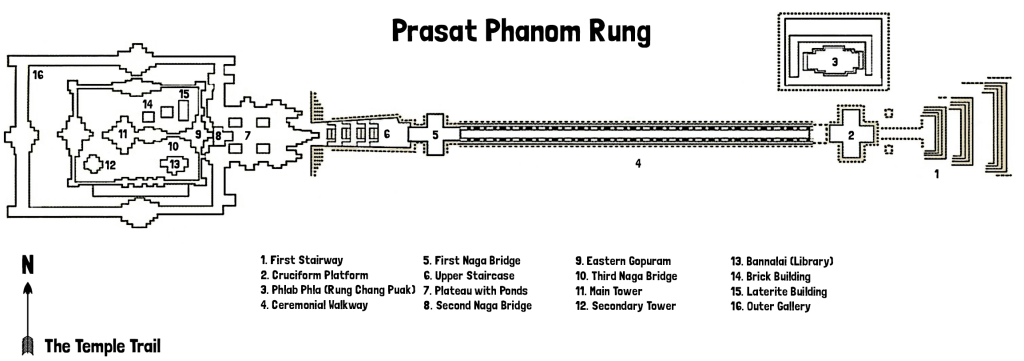
The map is a reworking of Plan du parc historique de Phnom Rung by Tousleso (CC BY-SA 3.0)
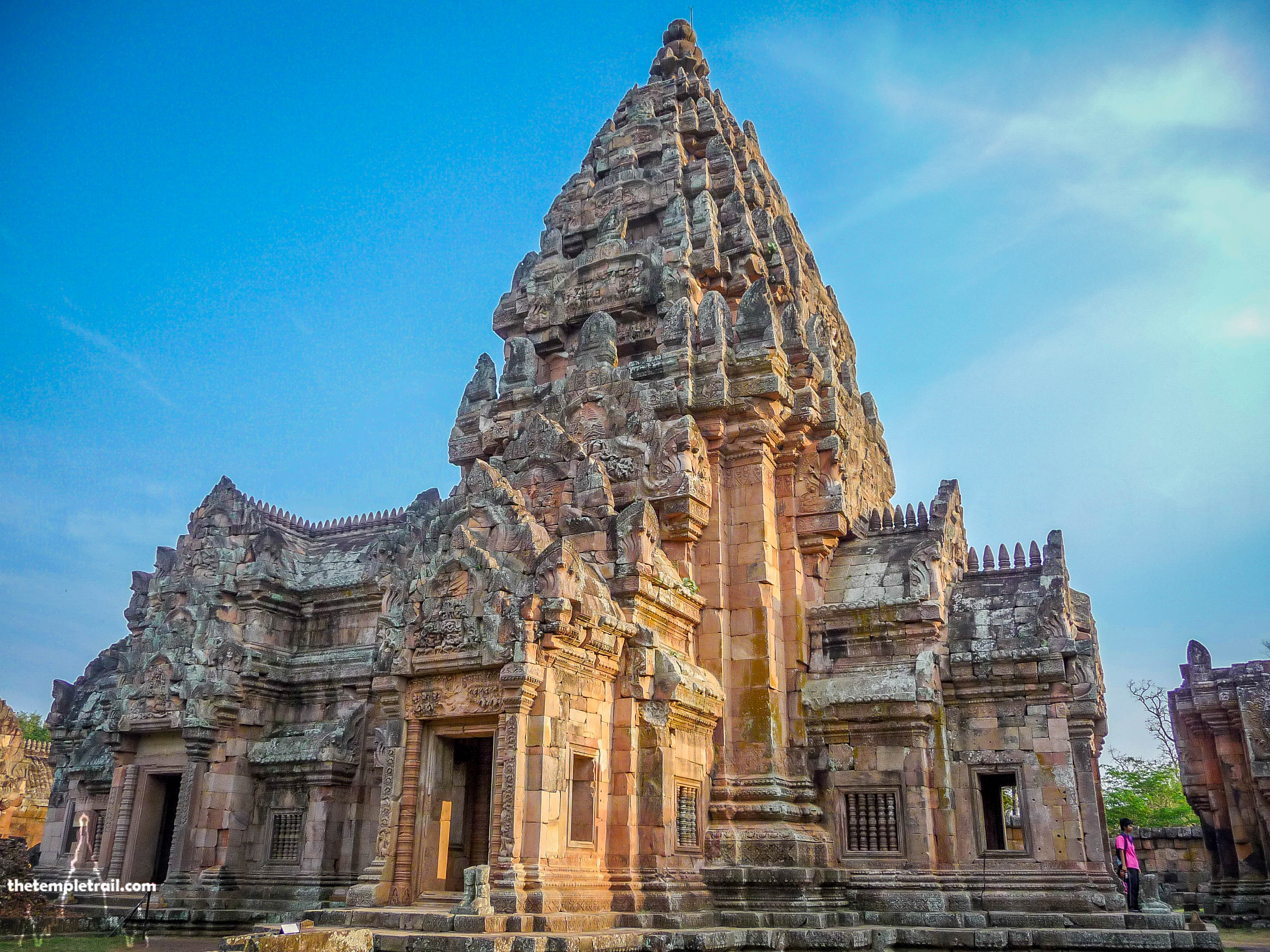
 Tiwanaku
Tiwanaku